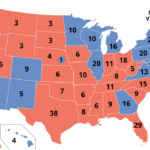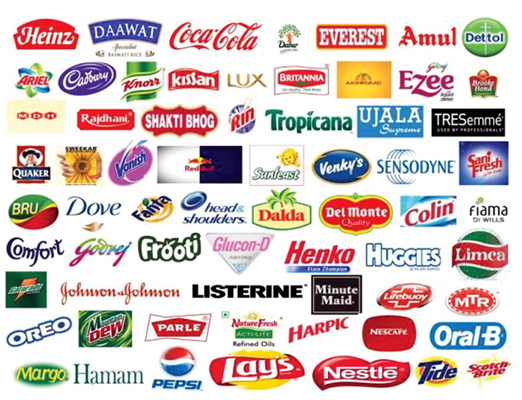- Cover Story
- Governance
- Globe Scan
- Corruption
- State Scan
- Talk Time
- Cover Story
- Governance
- Globe Scan
- Corruption
- State Scan
- Talk Time
Recent Posts
© Copyright 2007 - 2023 Gfiles India. All rights reserved powered by Creative Web INC.GovernanceROYALTY ‘Rules’
There is urgent need to curb royalties and have a policy framework which will help to develop and nurture local innovations, R&D and IP creation
Anil RajputOctober 6, 20184 Mins read93 Views
 Written by Anil Rajput
Written by Anil RajputINDIA has been a victim of economic exploitation for centuries before we attained independence in 1947. This drain of wealth was so exploitative that Will Durant called the British rule in India as the “the most sordid and criminal exploitation of one nation by another in all recorded history”. Dadabhai Naoroji coined the term “drain of wealth” and wrote at length on how India was made to bleed for the upkeep of the British army and civil administration. According to economist Angus Maddison, India in the 18th century accounted for 23 per cent of the world’s GDP and by the time the British left India, this plummeted to under 3 per cent.
Post 1947, many companies in India have been paying royalty to their foreign parent companies. Royalty payments are typically charged for the use of brand name, product technology or both, developed outside the market where the IPR is registered. Unfortunately, many brands consumed on a day-to-day basis are mistaken to be our own. It is interesting to note that from toothpaste to tea and from soaps to chips, most of them attract royalty and in short a significant amount of money earned in India is taken away by these foreign companies every year.
Until 2009, these royalty payments were monitored and the outflow was measured and controlled having a ceiling of 5 per cent on domestic sales and 8 per cent on exports with a lump-sum payment not exceeding $2 million in the case of IPR without any technical transfer and 2 per cent of exports and 1 per cent of sales in case of trademark or brands.
Many brands are mistaken to be our own – from toothpaste to tea and soaps to chips – and attract royalty; a significant amount of money earned in India is taken away by foreign companies every year
In December 2009, the government liberalised royalty and the technical fee regulation with the aim of encouraging multinational companies to invest in India and job creation. This resulted in many MNCs revisiting royalty outflow to their brand owners. Royalty outflows from India consistently increased as percent of FDI flows, rising from 13 per cent in 2009-2010 to 18 per cent in 2012-13, thus reducing the efficacy of FDI. In fact, the royalty outgo of Indian units of just 32 MNCs was up 10 per cent in FY15 when compared to the previous year, and surprisingly accounted for 21 per cent of these companies’ profits. In a report released by Institutional Investor Advisory Services ( IiAS), it was stated that over 2010-2014, aggregate royalty and related payments of these 32 MNCs increased at a CAGR (compound annual growth rate) of 20 per cent, compared to a mere 7 per cent growth in their pre-royalty, pre-tax profits. IiAS recommended that these payments be brought under the ambit of shareholder approval. Royalty has a major impact on revenue collection and it also affects minority shareholders by way of lower net profits that could be used as dividend. Interestingly, royalty is part of most Double Tax Agreements (DTAs) thereby withholding tax is merely 10.56 per cent as against corporate profit being taxed at 42.23 per cent for foreign-owned companies.
One way of arresting royalty outflow is through the creation of domestic brands. Over the years, India has witnessed the growth of companies like Patanjali, Reliance, Mahindra, Kotak, ITC, SBI, IOC, ICICI amongst others. Profits generated from them and from many of their brands are retained in our country and nothing is taken out by an overseas parent company. In addition, companies like ITC and Patanjali have permeated to the very bottom of the food and necessity chain with products like match boxes, soap, biscuits, atta, toothpaste among others, and the dominance of MNCs for the first time since independence has been truly challenged.
Having said this, India still has a long way to go when it comes to iconic brand building. If we look across the world we realise that all great brands have one thing in common, that they dominated in their own country before being a runaway success overseas. McDonalds, for example, in 1958 had 34 branches in the USA which increased to 102 in a span of just one year. The traction received by the brand from the citizens of the country was tremendous and by 2016 McDonalds had nearly 37,000 outlets worldwide. Similarly, Ford started out in 1896 and by 1906, it was the top selling brand in USA producing nearly 8,800 cars. It was only in 1911 that the company opened its first factory outside the country. Today, the company has production lines in Brazil, France, Thailand, China, Germany, South Africa and many more countries. Apple was founded in 1976 and its product Apple 2 provided significant momentum and revenue growth for the company. Thereafter, the company went through a period of trial and tribulations till 2001, when the i-Pod was launched and it hasn’t looked back ever since. Today, Apple’s worldwide revenue is $229 billion and the company has stores all over the world. BMW, Burger King, Samsung, Toyota, Coca Cola, GE, Pepsi, HUL, and Nestle are all examples of out-of-the-box innovation and the results are for all to see.
In a report by Institutional Investor Advisory Services (IiAS), aggregate royalty and related payments of 32 MNCs over 2010-2014 increased at a CAGR of 20 per cent compared to 7 per cent growth in their pre-royalty, pre-tax profits
THE case in point is that if the brand is unique, if it connects with the people i.e. conveys a message (this could be a topical subject, social message, basically storytelling and alignment of the brand with the culture, values, beliefs and traditions), has top rate quality, is competitively priced, stays ahead of the curve, is sensitive to feedback and realigns and re-innovates accordingly, then it will just about always attract and multiply the loyalty of the consumers. These are intrinsic traits that a brand must exhibit consistently and without fail. There have been many brands that have been successful for decades but their management did not see the changing environment and technology, which resulted in new and innovative products taking away the entire market, and today, those brands are non-existent.
It is, therefore, necessary to have a policy framework which will help to develop and nurture local innovations, R&D and IP creation. This will ensure that as consumption in the country grows, the wealth generated by the domestic population is retained in India to strengthen the economy and empower the people of the country.
The writer is Sr. Vice President, ITC Ltd. The views expressed here are personal.
Recent Posts
Related Articles
GovernanceNewsBackdoor entry of Private players in Railway Production Units ?
Written by K. SUBRAMANIAN To Shri G C Murmu C&AG Dear Shri Murmu,...
ByK. SUBRAMANIANFebruary 22, 2024GovernanceNailing Labour to The Cross
Written by Vivek Mukherji THEY grease the wheels of India’s economy with their...
ByVivek MukherjiMay 5, 2020GovernanceBig Metal Momentum
Written by GS Sood PRECIOUS metals especially gold and silver are likely to...
ByGS SoodMay 5, 2020GovernanceStrengthening Social Enterprise Ecosystem: Need for systemic support from the Government
Written by Jyotsna Sitling and Bibhu Mishra THE world faces several challenges today....
ByJyotsna Sitling and Bibhu MishraMay 5, 2020 - Governance
- Governance

























































